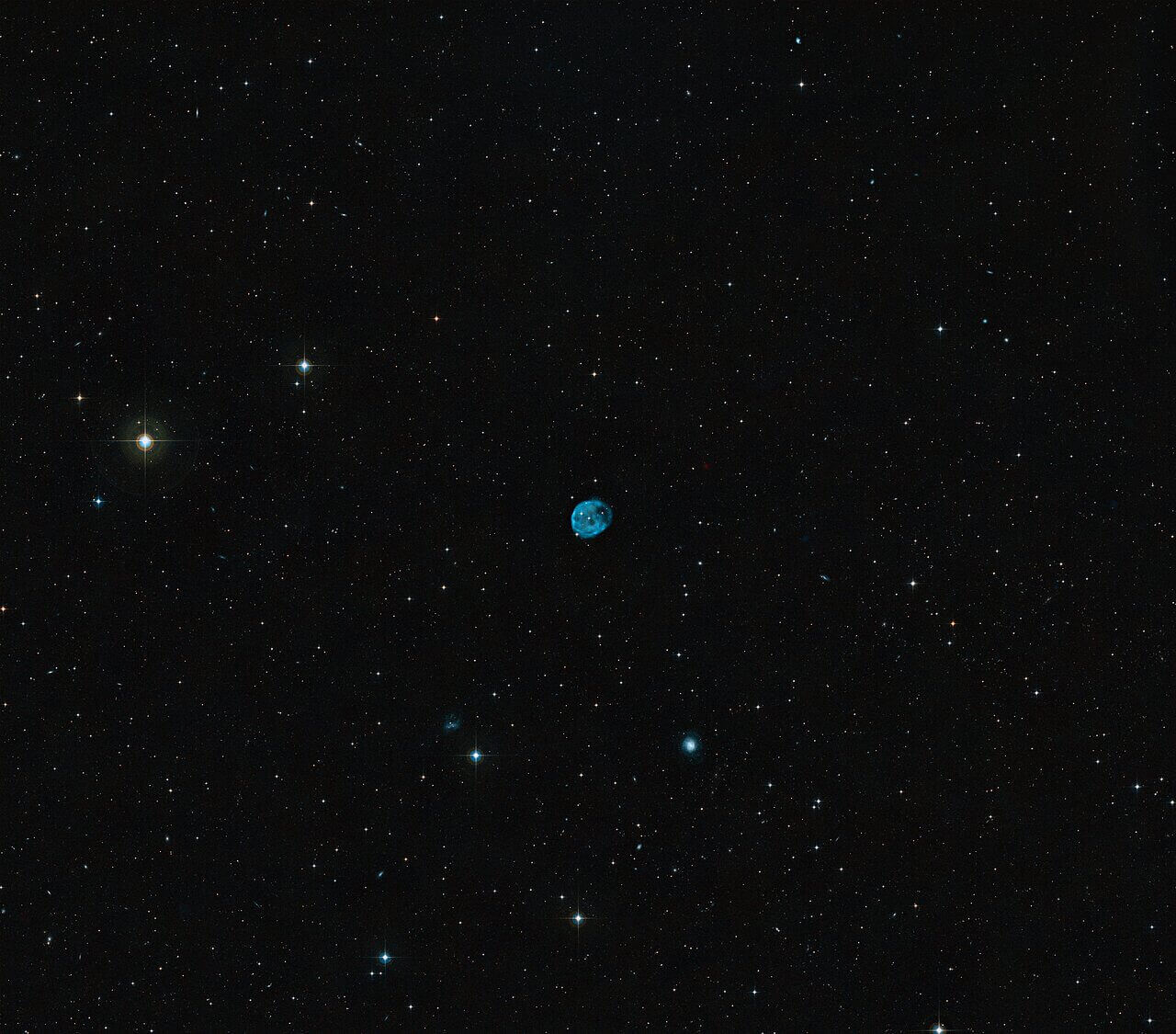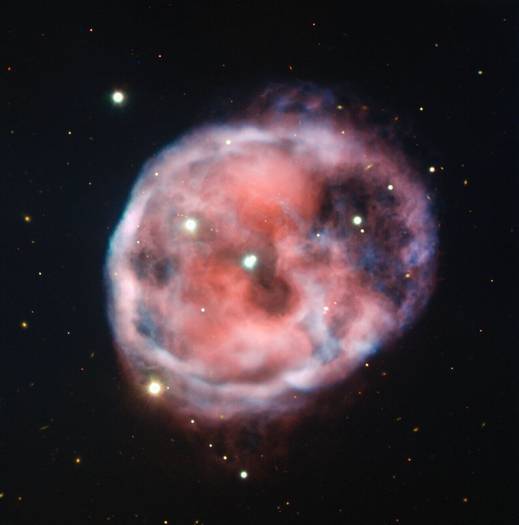New ESO’s VLT image of the Skull Nebula. Image © ESO
NGC 246, widely known as the Skull Nebula or Caldwell 56 lies about 1600 light-years away from Earth in the constellation Cetus (The Whale) have recently been successfully imaged by ESO’s Very Large Telescope (VLT). They recorded, as the name suggests- the skull structure of the nebula and in addition, they record beautiful bloodshot colours.
This planetary nebula is the first known to be associated with a pair of closely bound stars orbited by a third outer star.
This star, which is not visible in the above image, is a dim red dwarf that sits close to the white dwarf at about 500 times the distance between Earth and the Sun. The red and white dwarf stars orbit each other as a pair, and the outer star orbits the two dwarfs at a distance of around 1900 times the Earth-Sun separation. Collectively, these three stars establish NGC 246 as the first known planetary nebula with a hierarchical triple stellar system at its centre.
Astronomer predicts that this nebula was formed when a Sun-like star expelled its outer layers in its old age, leaving behind its naked core - a white dwarf - one of two stars that can be seen at the very centre of NGC 246.

This nebula has been known for centuries, however, it was only in 2014 did astronomers discover, using ESO’s VLT, that the white dwarf and its companion are concealing a third star situated at the heart of the Skull nebula.
This image was taken by the FORS 2 instrument on ESO's VLT in the Chilean Atacama Desert. The image intentionally captures light emitted in some narrow ranges of wavelengths - those associated with hydrogen and oxygen gas.
Observations of light emitted by particular elements help reveal a wealth of information about an object’s chemical and structural compositions. This new image of the Skull Nebula highlights where NGC 246 is rich or poor in hydrogen (shown in red) and oxygen (depicted in light blue).
